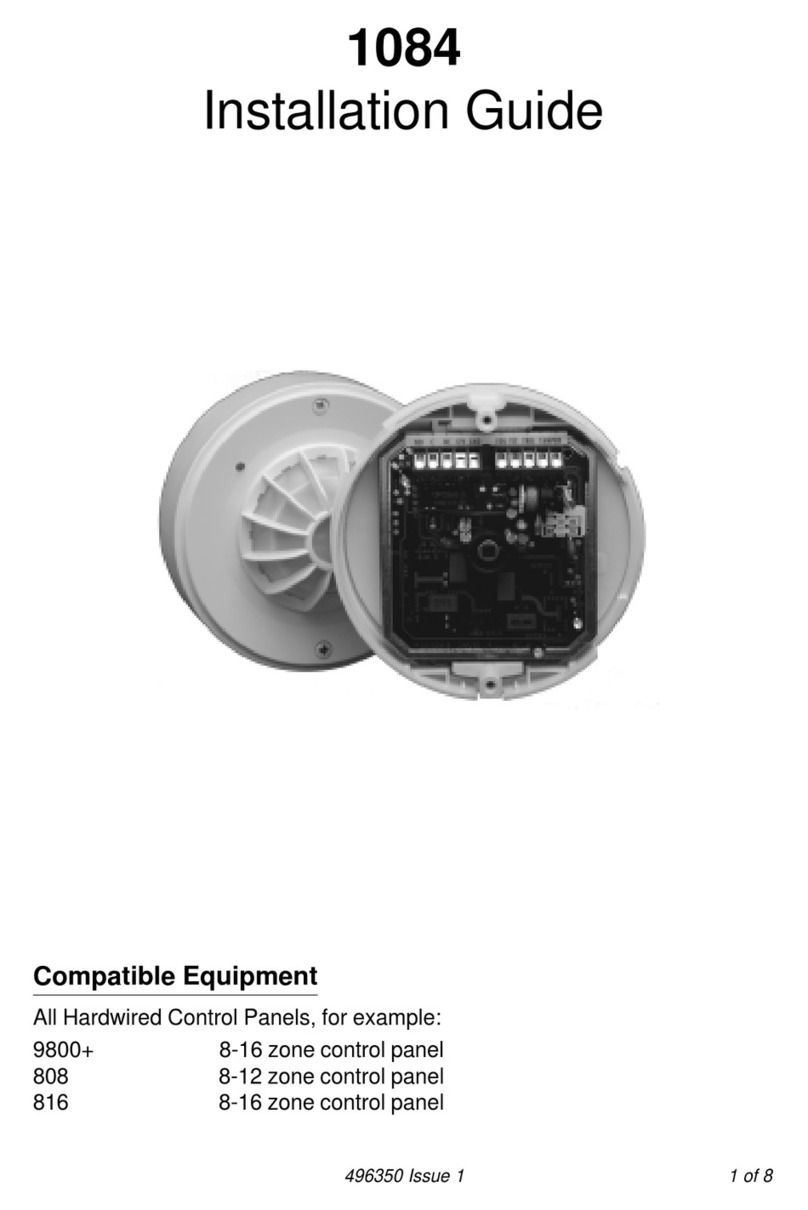
496349 Issue 1 9 of 10
Commissioning
When the PIR and MW sensors have been tested and adjusted and the
operational mode has been selected, the operation of the complete detector
should be tested as follows:
1. Select Walk Test at the control panel or switch, if applicable.
2. Clear the protected area and make four random direction walk tests.
Walk at a rate of one normal step per second within the detection
pattern. The unit should alarm within three out of the four walk tests.
3. Stand outside the protected pattern and operate any potential cause of
false alarm, e.g., operate lights, open doors, etc. If the unit detects the
deliberate cause of false alarm, try readjusting the detector pattern.
4. Stand outside the detection pattern and observe the detector operation
for three to five minutes without doing anything. The detector should not
alarm. If the detector does alarm, locate the cause and correct it.
Note: When walk testing, cross the sensitive zones at right angles in an upright
position. After each activation, wait until the LEDs have extinguished.
Fault Finding
Alarm LED does not illuminate during testing
• Test jumper not fitted correctly. Check Test jumper.
• Detect not set for Walk Test. Check that panel is set for Walk Test or
switch is in Walk Test position if using Remote LED Enable function.
• Connection error. Check connections to detector connector block.
PIR sensor activates with no movement.
• Check mounting position for sources of air current or heat. Check
protected area for pets or large rodents. Rectify or relocate detector.
MW sensor activates with no movement.
• Microwave sensitivity set too high. Reduce sensitivity setting. Recheck
microware coverage after any adjustment.
• Possible vibration at mounting position. Check for vibration at mount-
ing position. Check area for pets or large rodents. Rectify, or relocate
detector.
If unit set for Trouble indication, red LED flashes.
• Microwave sensor failure. Replace detector.
1081/1082




























